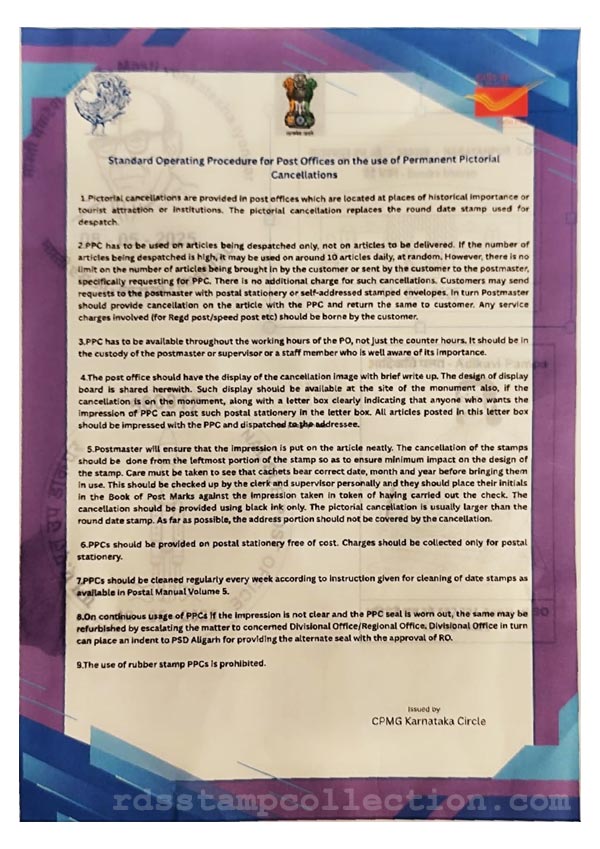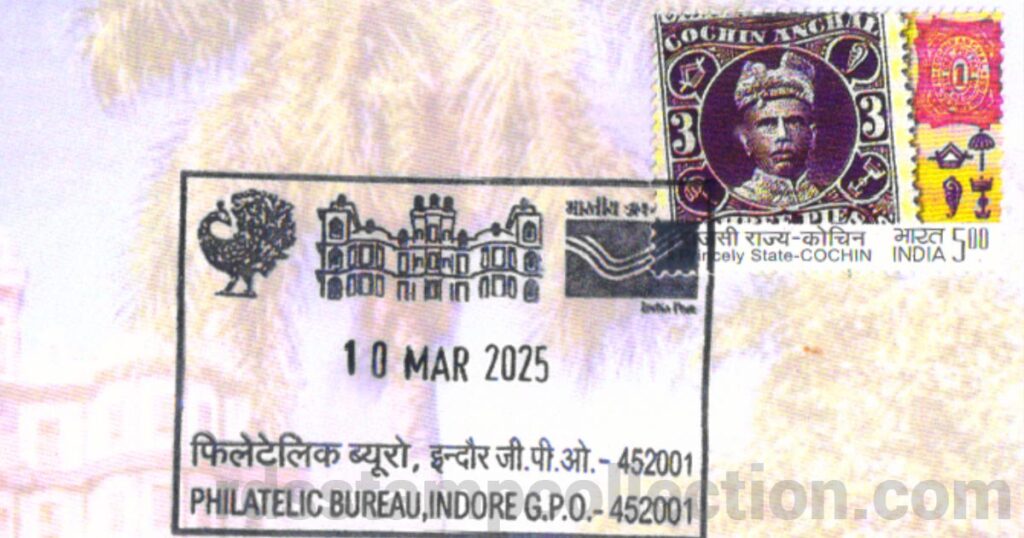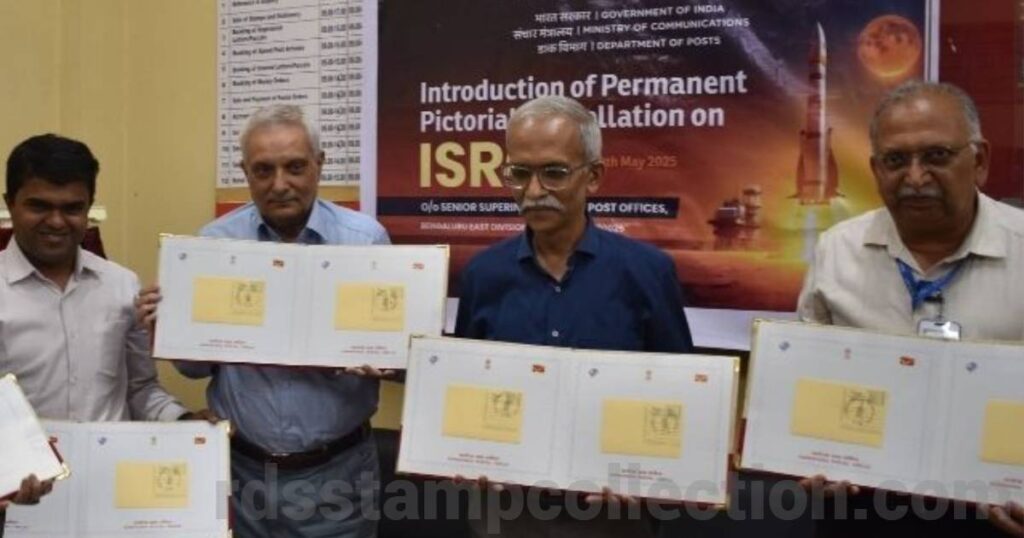Introduction
Permanent Pictorial Cancellations (PPCs) are special postmarks used by India Post to highlight places of historical, cultural, or tourist significance. These unique cancellations replace the standard round date stamp on dispatched mail, adding a touch of heritage to postal services. This blog post explores the Standard Operating Procedure (SOP) issued by the CPMG Karnataka Circle, detailing how PPCs are implemented in post offices, their significance, and the guidelines for postmasters and staff.
The Standard Operating Procedure by CPMG, Karnataka Postal Circle

- Pictorial cancellations are provided in post offices which are located at places of historical importance or tourist attraction or Institutions. The pictorial cancellation replaces the round date stamp used for despatch.
- PPC has to be used on articles being despatched only, not on articles to be delivered. If the number of articles being despatched is high, it may be used on around 10 articles daily, at random, However, there is no limit on the number of articles being brought in by the customer or sent by the customer to the postmaster, specifically requesting for PPC. There is no additional charge for such cancellations. Customers may send requests to the postmaster with postal stationery or self-addressed stamped envelopes. In turn Postmaster should provide cancellation on the article with the PPC and return the same to customer. Any service charges involved (for Regd post/speed post etc) should be borne by the customer.
- PPC has to be available throughout the working hours of the PO, not just the counter hours. It should be in the custody of the postmaster or supervisor or a staff member who is well aware of its importance.
- The post office should have the display of the cancellation image with brief write up. The design of display board is shared herewith. Such display should be available at the site of the monument also, if the cancellation is on the monument, along with a letter box clearly indicating that anyone who wants the impression of PPC can post such postal stationery in the letter box. All articles posted in this letter box should be impressed with the PPC and dispatched to the addressee.
- Postmaster will ensure that the impression is put on the article neatly. The cancellation of the stamps should be done from the leftmost portion of the stamp so as to ensure minimum impact on the design of the stamp. Care must be taken to see that cachets bear correct date, month and year before bringing them in use. This should be checked up by the clerk and supervisor personally and they should place their initials in the Book of Post Marks against the impression taken in token of having carried out the check. The cancellation should be provided using black ink only. The pictorial cancellation is usually larger than the round date stamp. As far as possible, the address portion should not be covered by the cancellation.
- PPCs should be provided on postal stationery free of cost. Charges should be collected only for postal stationery.
- PPCs should be cleaned regularly every week according to instruction given for cleaning of date stamps as available in Postal Manual Volume 5.
- On continuous usage of PPCs if the impression is not clear and the PPC seal is worn out, the same may be refurbished by escalating the matter to concerned Divisional Office/Regional Office, Divisional Office in turn can place an indent to PSD Aligarh for providing the alternate seal with the approval of RO.
- The use of rubber stamp PPCs is prohibited.
Conclusion
The SOP for Permanent Pictorial Cancellations by the CPMG Karnataka Circle is a significant step toward standardizing and promoting the use of PPCs in post offices. Its clarity and detail are appreciated, as they ensure effective implementation and highlight India’s cultural heritage. It is hoped that other postal circles will learn from this example and take similar actions, fostering a unified approach to celebrating India’s landmarks through postal services.
Have you ever received a letter or postcard with a Permanent Pictorial Cancellation? Share your story in the comments below to inspire others.
Check the latest PPC release updates on our blog at Permanent Pictorial Cancellation – R D’s Stamp Collection.

